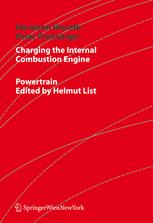

Most ebook files are in PDF format, so you can easily read them using various software such as Foxit Reader or directly on the Google Chrome browser.
Some ebook files are released by publishers in other formats such as .awz, .mobi, .epub, .fb2, etc. You may need to install specific software to read these formats on mobile/PC, such as Calibre.
Please read the tutorial at this link: https://ebookbell.com/faq
We offer FREE conversion to the popular formats you request; however, this may take some time. Therefore, right after payment, please email us, and we will try to provide the service as quickly as possible.
For some exceptional file formats or broken links (if any), please refrain from opening any disputes. Instead, email us first, and we will try to assist within a maximum of 6 hours.
EbookBell Team

4.3
78 reviewsSupercharging the reciprocating piston internal combustion engine is as old as the engine itself. Early on, it was used to improve the high-altitude performance of aircraft engines and later to increase the short-term peak performance in sporty or very expensive automobiles. It took nearly 30 years until it reached economic importance in the form of the ef?ciency-improving exhaust gas turbocharging of slow- and medium-speed diesel engines. It took 30 more years until it entered high-volume automotive engine production, in the form of both mechanically driven displacement compressors and modern exhaust gas turbocharging systems. Since, in spite of promising alternative developments for mobile applications, the internal combustion engine will remain dominant for the foreseeable future, its further development is essential. Today many demands are placed on automobile engines: on the one hand, consumers insistonextremeef?ciency,andontheotherhandlawsestablishstrictstandardsfor,e.g.,noiseand exhaust gas emissions. It would be extremely dif?cult for an internal combustion engine to meet these demands without the advantages afforded by supercharging. The purpose of this book is to facilitate a better understanding of the characteristics of superchargers in respect to their physical operating principles, as well as their interaction with piston engines. This applies both to the displacementcompressorandtoexhaustgasturbochargingsystems,whichoftenareverycomplex. It is not intended to cover the layout, calculation, and design of supercharging equipment as such–thisspecialareaisreservedforthepertinenttechnicalliterature–buttocoverthosequestions which are important for an ef?cient interaction between engine and supercharging system, as well as the description of the tools necessary to obtain an optimal engine–supercharger combination.